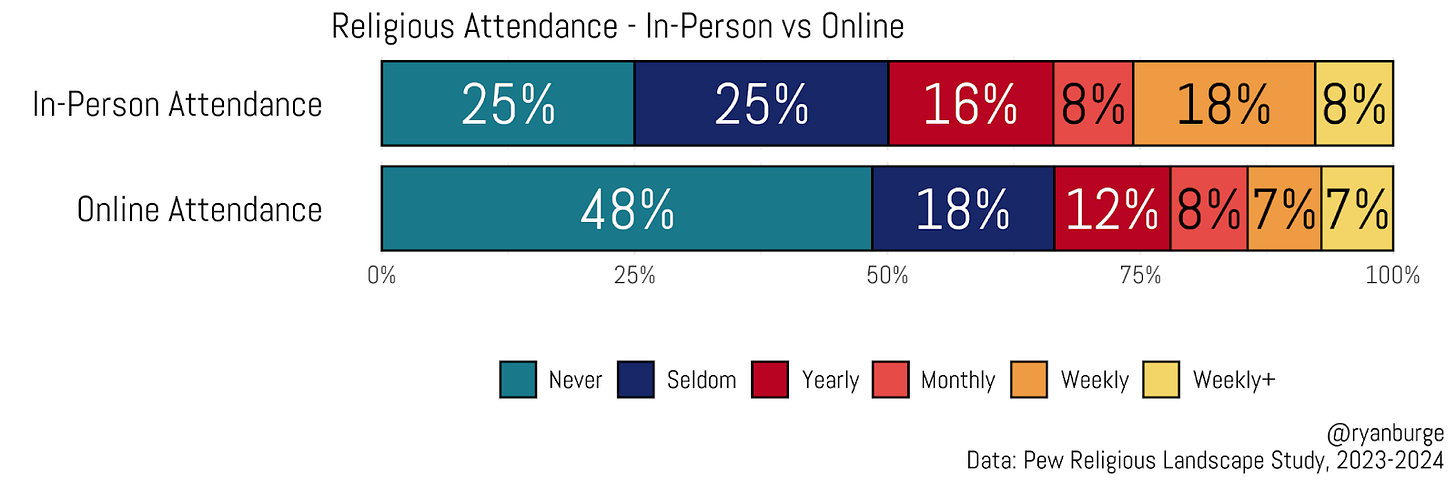Everything You Ever Wanted to Know about Who's Watching Online Church
Some hard numbers that deserve serious reflection
The world went into lockdown in March and April of 2020. The COVID-19 pandemic forced Americans to stay home on a scale unseen in our lifetimes. Now, nearly four years removed from the height of the crisis, it’s clear that if life were going to snap back to “normal,” it would have already happened. Remember all those think pieces predicting that the pandemic would spark a wave of remote-only jobs? A recent Washington Post headline suggests otherwise: Crowded trains, lunch and coffee lines: More people are working from the office.
Lockdowns also reshaped houses of worship across the United States. Many churches had never even considered streaming services online before COVID-19. That was certainly true for my small congregation. On a good Sunday we had about 15 people in attendance, and with most members older, streaming just didn’t seem worth the effort.
High School Students Are Growing Incredibly Anti-Social
I’ve got two sons - one is thirteen and the other is ten. I remember when my wife and I were thinking about having children, we talked all the time about the best type of birthing plan (I distinctly remember becoming intimately aware of something called the
But the data shows that churches adapted quickly. According to the State of Church Tech 2024 report, 91% of churches were live-streaming their services by 2024. The share of leaders who said streaming would play a key role in the future of their church jumped from 47% in 2023 to 62% in 2024. In short, more and more churches are leaning into the idea of growth through the internet.
Until recently, though, few surveys have asked about the people watching church online. The new Pew Religious Landscape Study, fielded in late 2023 and the first half of 2024, included a question specifically about watching services online—giving us a real look at this group using a very large sample.
Let’s start by visualizing how Americans reported attending services both in person and online.
About one in four Americans (25%) now say they never attend religious services in person. Another 25% say they attend seldom. Put those two groups together and you realize that roughly half of Americans will not set foot in a church, synagogue, mosque, or any other house of worship this year. What about those who are there weekly? That’s about a quarter of the population: 18% report weekly attendance, and another 8% say they go multiple times per week.
Pew also asked about online attendance with this question: “How often do you watch or participate in religious services online or on TV?” Nearly half of respondents (48%) said they never do—which is double the share who never attend in person. In all, about two-thirds of Americans have little or no interaction with online worship. Only 14% said they participate online on a weekly basis—roughly half the rate of in-person weekly attenders.
From this angle, online worship doesn’t look nearly as popular as simply showing up in person. What struck me most, though, was just how many Americans have no connection at all to the idea of watching a service online.
But let’s complicate things by putting both of these dimensions together in a single heatmap. That way we can see how in-person and online attendance overlap. Are there truly “online-only” worshippers? And are there people who attend in person several times a week but never once stream a service?




